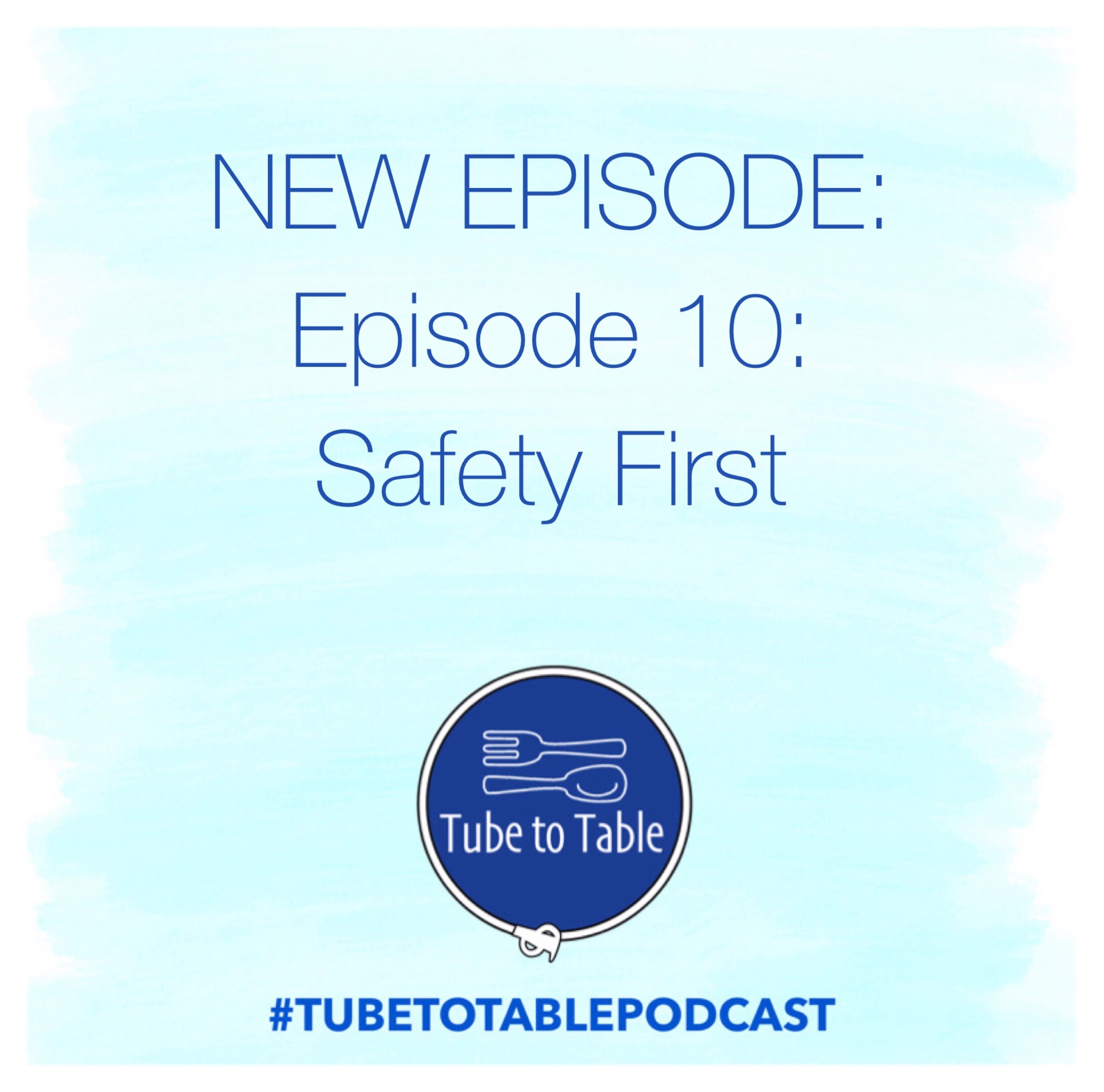Tube To Table Podcast Episode 10: Safety First
July 23, 2019
Posted in: Feeding, Feeding Tube Weaning, Tube To Table Podcast, Uncategorized
This week’s episode is all about the safety parameters put in place during your child’s tube weaning journey and how we work together with your child’s medical team to establish boundaries to make sure your child is safe. In preparation for an intensive tube wean, the Thrive team collaborates with your child’s existing medical team to make sure there is a discussion tailored to each child’s needs to make sure they are safe during this time. As discussed in previous episodes, it is crucial to educate your child’s medical team with information on how children learn to eat, but then it is also necessary to get their feedback about what parameters a child needs in order to stay safe during a wean. This dialogue starts as early as the evaluation and continues throughout intensive treatment and into follow-up.
You can download this episode from Itunes, Stitcher, Spotify, Google Play, or listen to it below:
What do we look at first?
During the evaluation process, the Thrive team works with your medical team to determine that your child is safe to begin the tube weaning process. This involves looking at your child’s medical history, any complications that may impact feeding such as respiratory rate or cardiac status, and any other factors that may play a role in their medical readiness. This can sometimes require a discussion with your feeding team and medical team to educate them on areas where the child seems ready and how we can work to ensure safety. Establishing medical readiness is the first, and most important, step to identify prior to moving forward with weaning from your feeding tube.
What is the focus during treatment?
During the treatment period, including intensive treatment as well as follow up, the Thrive team looks at weight, hydration, general stress level, and wellness as our four main categories of safety parameters. These parameters are all determined with your medical team PRIOR to starting treatment and are tailored specifically to each child.
What does the number on the scale really mean?
This number can easily trigger stress for a lot of families, medical team members, and therapists. Weight often tends to be the biggest concern when working with medical teams during this process. It is crucial to have a conversation with your medical team about what we expect during this time period and WHY we expect some weight loss. Our focus within our program is to help children get hungry in order to understand their bodies better and how food makes them feel, therefore there is usually some degree of weight loss. Every child is different and therefore the weight parameters are established with your doctor prior to the treatment period. This discussion with your medical team involves learning how much weight the child can safely lose within this acute/intense phase of treatment. During the Thrive program, that time period is typically a 10 days-2 week period.
The focus throughout the program is not for children to simply just lose weight or stay at a place where weight loss is happening for a longer period. The focus is to establish hunger and introduce the child to this feeling, as food is being reintroduced in a stress-free, positive environment.
Are they hydrated?
When we have this conversation with your medical team, the parameters are set based on how we would know if a child is hydrated and what signs to look for and when they would need more hydration supplementation. This conversation is framed within the context of “What if this child was sick, teething, or taking less? What parameters would you give to a family?” When put in this context, the medical team can focus on basic hydration parameters, despite the child’s history. Safety parameters often include the number of wet diapers, poop diapers, tears, and general wellness. These are all factors that we discuss with your medical team during the treatment period.
How are you managing stress?
Feeding kids is HARD! There will be a follow up podcast episode this summer focusing mainly on stress and how it is impacted throughout this entire process, so stay tuned! This is also a safety parameter that Thrive sets in place during treatment. We have a discussion with families about how they can keep themselves well during the weaning process. The first part of this discussion includes asking parents what their support system is, their specific coping skills, and what they do to deal with other stressful situations. Stress if often peaked during a wean so it is important to address these potential stress triggers prior to starting treatment. Stress can be sneaky and catchy. It is easy for stress to build up over time and then reach a point where it is hard to manage, especially during this journey. Our therapists are in the home with you during those tough moments to help you talk about that stress and create helpful strategies.
If you listen during the safety introduction on an airplane, you’ll often hear that in the event of an emergency, you must put your oxygen mask on before you can help anyone else. This applies to tube weaning as well. If you are unable to manage your stress and not feeling ready or prepared, it will be impossible to help your child navigate through this difficult time. This is a great resource on how to manage that stress and focus on healing, even during these intense experiences. This blog is also another great resource for learning more about post traumatic stress and how it relates to your tube weaning journey.
Stay tuned this summer for a Tube To Table podcast episode on stress and how to manage it during your tube weaning journey!

Be the first to comment